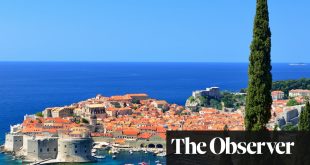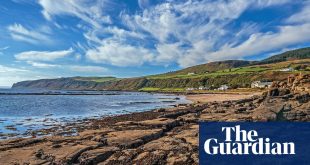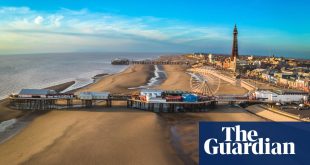Winter storms in the hills can change the best of plans. Outside the door of the tiny Norwegian touring cabin, snow is blowing sideways and drifting across our tracks. Wreaths of mist filter the surrounding trees into charcoal smudges.
Walking to the woodshed, let alone a long day travelling on skis with heavy rucksacks, seems unappealing. So we throw another log into the woodburner and break out the cards and Kindles to wait out the weather.
My wife and I are in Sandfløten, a small hut in the woods in the mountains east of Lillehammer. The plan on this short tour is to cross an area of ungroomed ski paths to link up with huts on the managed cross-country ski trails around the resort of Sjusjøen – around four days’ travelling in total.
With a tight schedule, a lost day means a change of plans: we will now retrace our route over two days via the Målia hut to our starting point.
Sign up to our Inside Saturday newsletter for an exclusive behind the scenes look at the making of the magazine’s biggest features, as well as a curated list of our weekly highlights.
We are on our first tour together on backcountry skis, heavier metal-edged cross-country skis. While we had both done cross-country day trips in the past, and I’d been touring on Alpine skis, this is our first multi-day trip on Nordic touring gear.
The idea was born a couple of months earlier, when we spent Christmas in Oslo and went cross-country skiing from a metro station on the outskirts out into the forest. So we’d joined the Norwegian Trekking Association (the DNT), which runs a network of more than 500 huts, and planned to come back and ski from hut to hut.
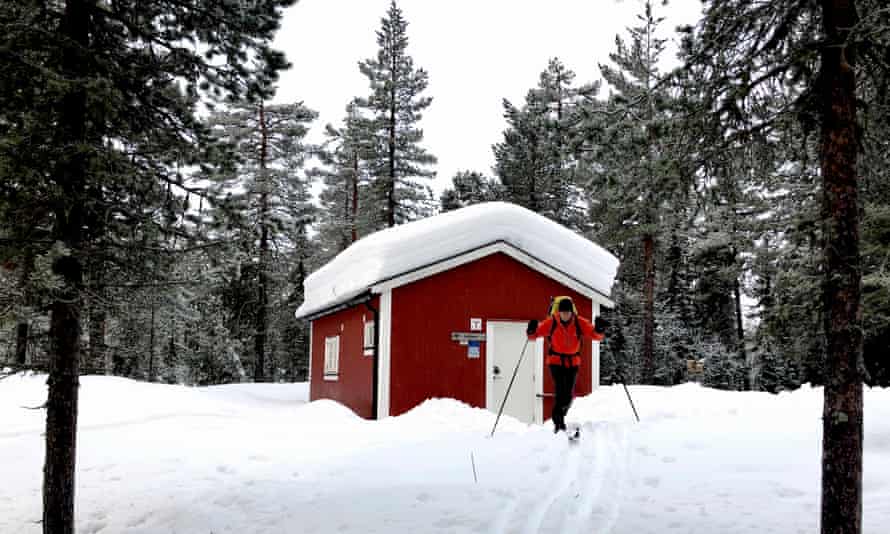
The plan is to travel light. Take the train from Oslo and a bus to our starting point. Then leave a change of clothes and our ski bags at a hotel in Hamar. Everything else – dehydrated meals, sleeping bags, a collapsible snow shovel, dry clothes for the hut – will go in the rucksacks.
We plotted the route for ease and safety, following well-travelled parts of the Hedmarksvidda, an area of low mountain moorland dotted with hamlets and crossed by roads.
Our starting point is the small ski station at Budor. From the trailhead, the skiing will be all uphill at first until we hit a rolling plateau.
We clip into the skis and kick off, the waxed bases gripping as we set off uphill, quickly warming up, and finding a slow but steady rhythm. After a while the trees thin out into a rolling white landscape dotted with small copses, with higher fells visible in the distance.
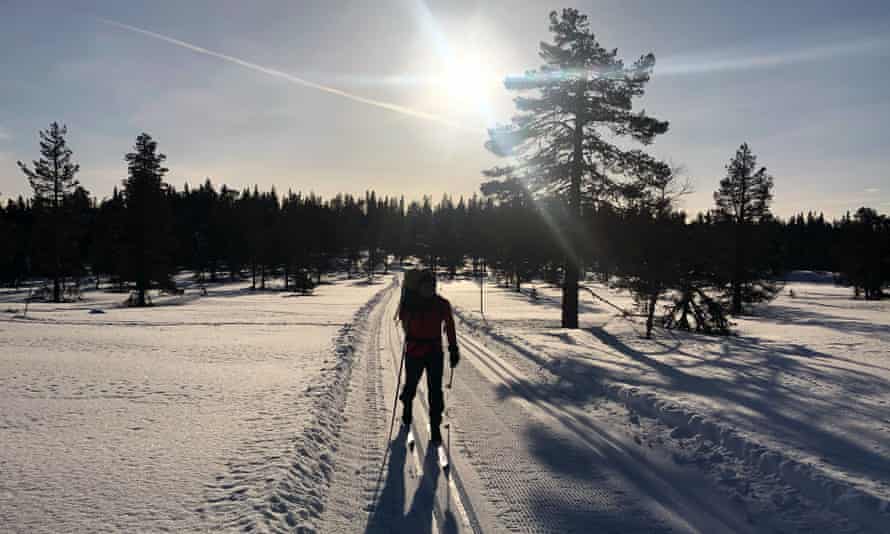
The first descents, with rucksacks pulling our centres of gravity backwards, are a little tense, but everything is working. At a crossroads we meet a wiry skier in his mid-60s who plans to ski 50km that day. We are much less ambitious, aiming for the Målia, a half-day’s travel away.
The DNT’s huts come in three classes: catered, where hot meals are served; semi-catered like Målia, where there is a larder and food is bought on an honesty system; and uncatered, where there is cooking gas, firewood and beds. A master key, supplied for a deposit, unlocks all of the cabins.
We reach an empty hut, let ourselves in and light the stove to warm it up and start drying our kit, damp from the day’s efforts. This hut sleeps 10 and can be busy in Norway’s winter school holidays in normal times – but not last winter, in the throes of the pandemic. (It is understood that visitors to huts that do not need booking can sleep on the floor.)
The solar-powered hut batteries are full, which means there’s electric light and we can charge our phones and GPS. We cook a meal and settle down to read. After dark, another guest arrives with her dog, who sleeps in a crate provided in one of the rooms.
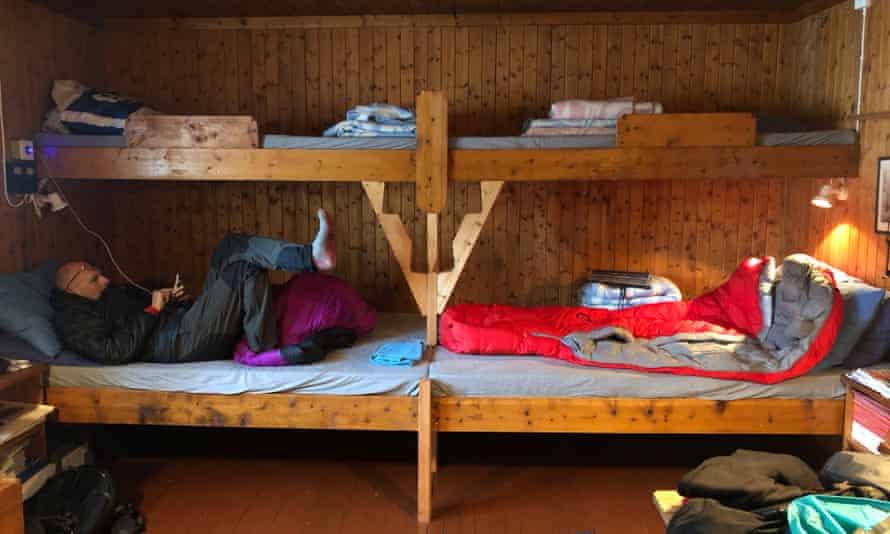
The next day takes us over hillier terrain, downhill at first and then a climb to a small hamlet and before a descent to an icy road. From here the trail is tougher to the next hut, the uncatered shelter at Sandfløten. The unmade path leads through dense woods across hidden stream beds and tripping roots, marked occasionally by paint blazes that are easy to miss.
We are following the map, GPS and some old ski tracks from time to time. Evening is falling and the hut, when we reach it, is visible only when we are almost on it, a dark cube among the trees. The last visitor, we see from the guestbook, was here two weeks ago.
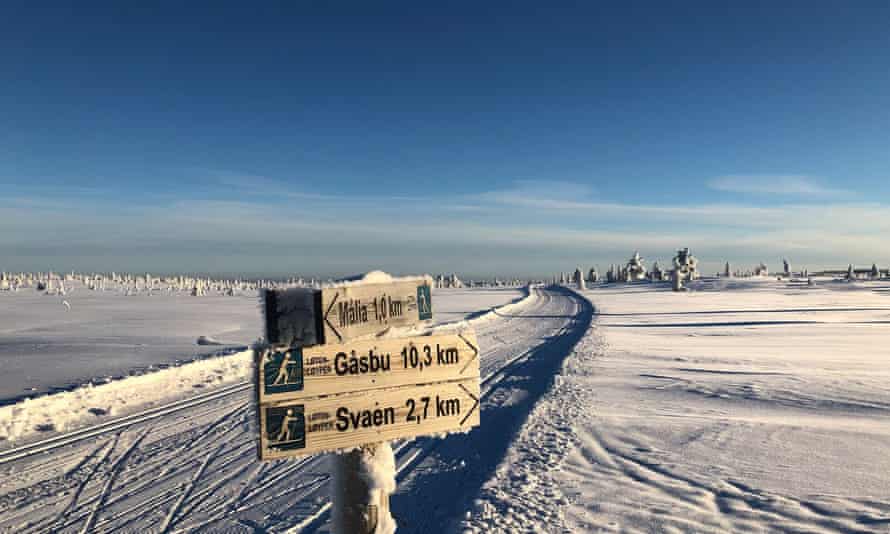
There is more work to do here. The hut’s door and the path to the woodshed and toilet need shovelling. The cooking gas canister and spare are both empty, which means boiling water for our dehydrated meals requires heating it from melted snow, a laborious process. But it is warm and cosy inside.
We go for an evening ski through the woods around the hut, making our own tracks across the snow-covered ponds and frozen marshes.
When it comes, the storm begins gently. The morning of the third day should take us through untracked woods and over a small pass. The mist creeps in and then the first flurries of snow fall. The weather worsens quickly and the trees are dim in front of us. We could navigate through the forest but opt to turn back to Sandfløten. Soon there’s wind and a heavy fall of snow. As we are sleeping, a warm front passes over, bringing rain, followed by another freeze.
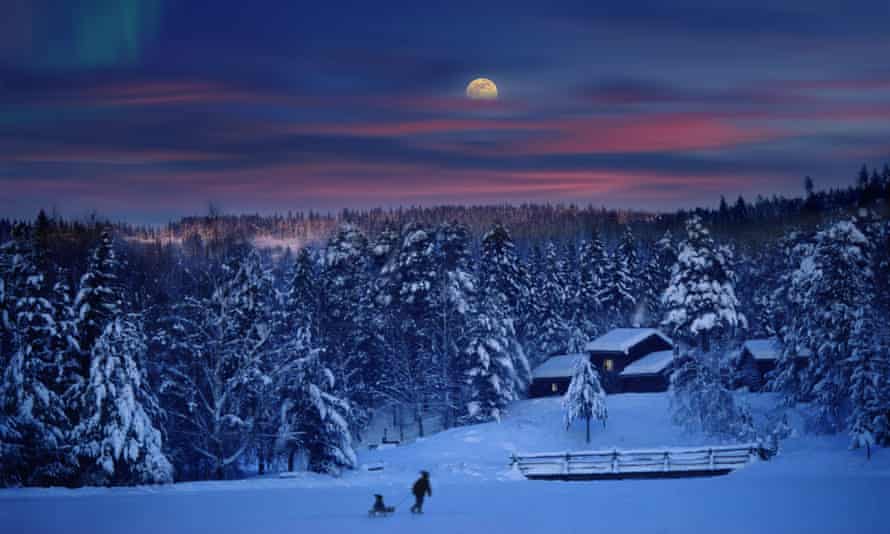
Retracing our steps towards Målia, we encounter challenging conditions. Lower down the snow is wet and heavy. As we climb up again we find fresh drifts that have frozen solid like hummocks of ice-cream, pretty but slippery and very difficult to ski. What had been relatively easy on the way out is now exhausting. At times the skis come off and we walk the most challenging sections.
The last day is kinder, with a dusting of fresh snow. As we have breakfast, the track-making machine passes the hut, repairing the route to Budor. The skiing is pleasant as we come back over the plateau to a mixture of dark clouds and sunshine that lights up a silvery landscape.
The final long descent to a lunch of pancakes and coffee in the cafe is fast and easy, and we think about a hot shower, clean clothes, a hotel bed and the train back to Oslo in the morning. We are tired but have a sense of achievement. The memory of the woods around Sandfløten with only the sound of the wind and birds calling will linger for a long time.
 Top Naija News – Nigeria News, Nigerian News & Top Stories Top Naija News – Nigerian Newspapers, Nigerian News. topnaijanews is a daily Nigerian newspaper covering Latest News, Breaking News, Entertainment, Sports, Lifestyle and Politics.
Top Naija News – Nigeria News, Nigerian News & Top Stories Top Naija News – Nigerian Newspapers, Nigerian News. topnaijanews is a daily Nigerian newspaper covering Latest News, Breaking News, Entertainment, Sports, Lifestyle and Politics.
